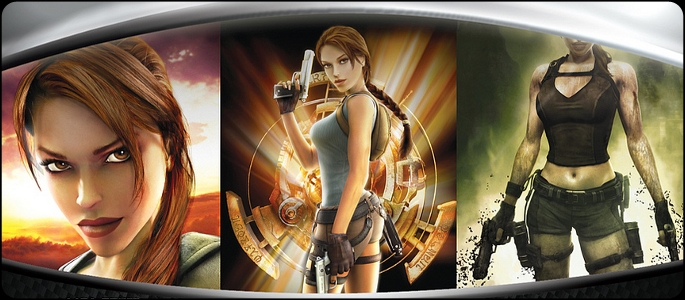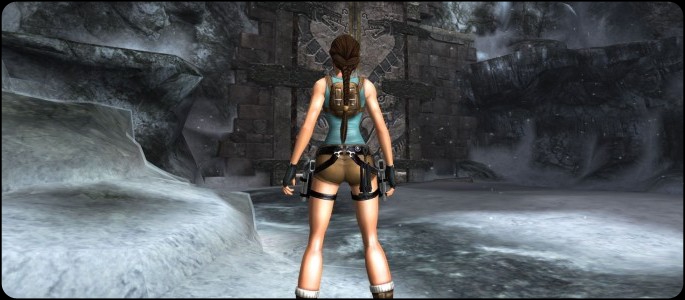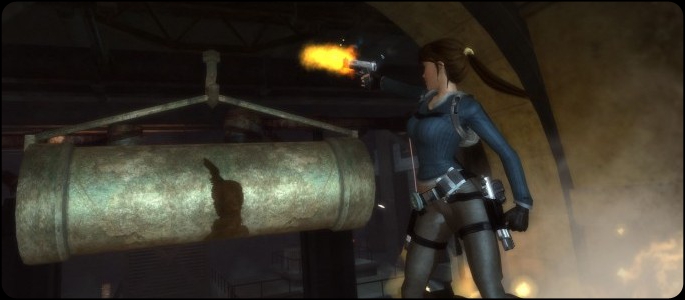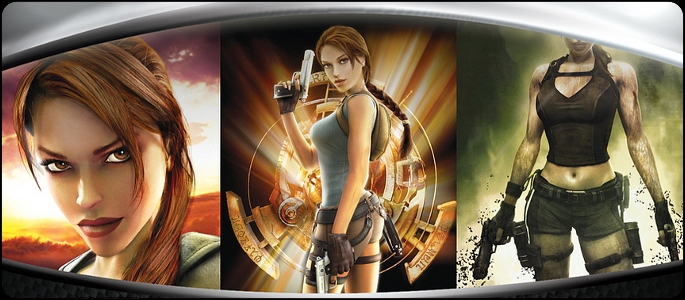
Over the past few years, a growing trend in the video game industry has seen publishers re-releasing HD-remastered collections of classic games in a single, value-priced package. The latest of these collections to be released is The Tomb Raider Trilogy, consisting of the most recent three retail releases in the series, as well as a few extras. But is this really Lara Croft at her finest?
The first game, Tomb Raider: Legend was developer Crystal Dynamics’ first entry into the well-established series. Legend sees Lara Croft getting back to her tomb-raiding roots that made her famous in the first place (aside from her voluptuous exterior). Lara travels across the globe on a quest to find one of the greatest artifacts in history, but ends up finding out that figures from her past have returned to get in her way. A typical adventure story, but it does a great job holding your interested throughout.
Tomb Raider: Legend offers a fantastic blend of platforming and puzzle solving. Throughout the course of the game you’ll have to find creative ways to traverse the terrain; the occasional gun fight is thrown in to keep you on your toes, but completing complex puzzles is required to move on. Boss fights and the now almost-mandatory vehicle stages round out the experience. Your task is to collect various artifacts scattered around each level. Collecting these artifacts and completing levels will unlock a slew of extras including outfits, concept art, character bios and time trials – adding at least some replay value. The time trials themselves will net you a few unlockable cheat codes that you can use in the main story mode or time trials. Things like unlimited ammo, one shot kills and invincibility.
The gameplay has been left untouched from the original release, which feels a bit dated. You can lock onto enemies by pressing and holding the L1 button. The problem with this is that it only works about 75% of the time. The graphics look stunning with their HD facelift, but the audio is a bit off. You will probably end up turning the music volume down as it tends to overpower the character’s voices at times. The camera can be problematic at times, which leads to endless frustration and plenty of untimely deaths. Overall, Tomb Raider: Legend is a great title and starts the trilogy off with a bang, making it a welcome addition for fans of the series.

The second game, Tomb Raider: Anniversary celebrates the tenth anniversary of the series with a remake of the first Tomb Raider, which was originally released on the PSOne. The game starts off in 1945 New Mexico where a nuclear explosion releases a mysterious winged creature. Back in present day, Lara is approached to find an important artifact (she’s always looking for artifacts!) that she once helped her father search for. Her search takes her to the Peruvian Mountains, Greece and Egypt, where she will need to track down all three pieces of the artifact. After collecting all three pieces the artifact is stolen and Lara must track it down and destroy it before it is used for evil purposes.
Tomb Raider: Anniversary has been updated from its original form to incorporate many of the elements that made Legend such a great game – such as a pole swinging element (no, not a stripper pile, get your mind out of the gutter), ledge hopping and updating Lara’s look. The game plays very similar to past installments. Gunfights, platforming and puzzles are standard fare. But it’s all been updated from the PSOne days, topping the original in almost every aspect. The combat does suffer from the same issues as Legend, though, and begins to feel a bit dated at times.
Anniversary is yet another great addition to the trilogy. Crystal Dynamics did a great job at making a ten-year old game feel current, and it still shows in this collection.

Last up is Tomb Raider: Underworld, which is a direct sequel to Tomb Raider: Legend and is the most recent game released in the series. In this game, Lara is searching for a place called Avalon. She will begin her quest in Thailand where she looks to find a missing gauntlet that was hidden by her father. Her journey will lead her to locations all over the globe including Mexico, Jan Mayan Island and the bottom of the Arctic Sea.
The story is exactly what you should come to expect, and is at its core, very similar to past installments. The core gameplay mechanics and level design are also similar, but Underworld at least adds more gunplay and some more complex puzzles. Lara is faster and more agile than previously. It appears that the developers were inspired by more recent titles – like Uncharted – but ultimately, it doesn’t do much to move the franchise forward.
Tomb Raider: Underworld is clearly the best game in the trilogy. The graphics are stunning at times, and the camera has been tweaked, performing better than the previous titles in the trilogy. The only real downside is the lack of DLC that was previously released on the Xbox 360.

The Tomb Raider Trilogy offers a significant value – 3 of the best Tomb Raider titles released, many hours of gameplay, plenty of puzzles to solve, treasures to collect, classic Tomb Raider action and a ton of replay value. The addition of trophy support to Legend and Anniversary is a big plus, as is the fact that a PS3 theme and some PlayStation Home avatars have been included, but it is a disappointment to see the previously released DLC for Underworld not included. The story in all three games, while similar, is excellent and the graphical overhaul makes these older titles look new. The only real downside are the controls and combat system, which feel dated. This is the very best collection available for Tomb Raider fans, or for anyone who wants to learn about Lara Croft and the series.
PlayStation LifeStyle’s Final Score
– Camera can be awkward at times. – Combat feels dated. |
 |
–








